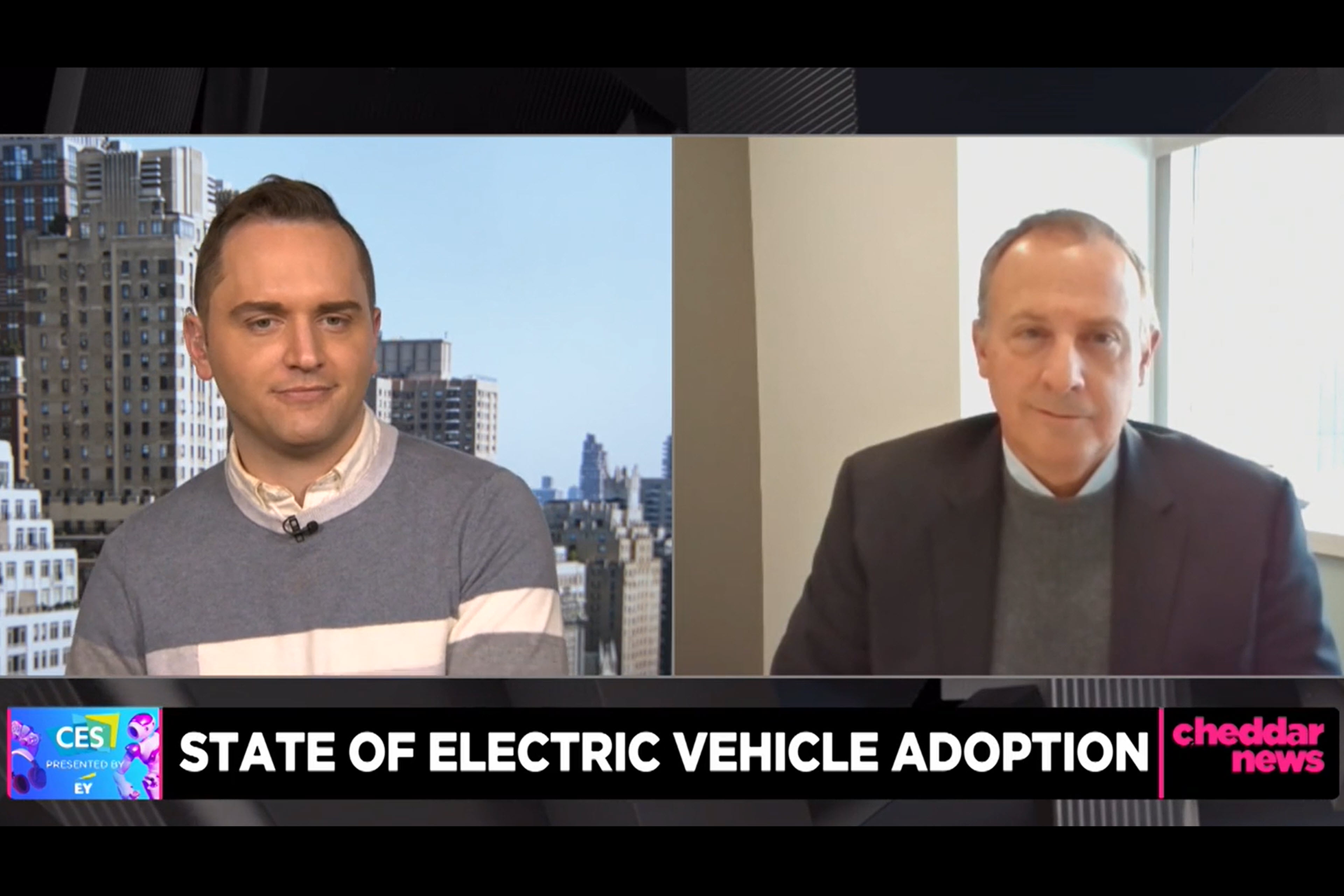EY refers to the global organization, and may refer to one or more, of the member firms of Ernst & Young Global Limited, each of which is a separate legal entity. Ernst & Young Global Limited, a UK company limited by guarantee, does not provide services to clients.
Making wider electric vehicle adoption a reality and the future of EVs
Watch EY Americas Mobility Sector Leader Steve Patton join Cheddar News at CES 2023 in Las Vegas to discuss the future of EVs and more.
In brief
- The construction of electric vehicle (EV) charging infrastructure is an important piece in the effort to grow the EV market.
- Cooperation and collaboration will shape the next steps of the EV movement.
Electric vehicle (EV) adoption targets are driven by incentives, as well as new funding packages to build charging infrastructure and advanced battery supply chains. But consumer confidence may be the most pivotal metric of them all to driving momentum in the evolving EV market.
The automotive industry’s challenge is to convince consumers who remain skeptical that EVs are easy to operate, and that plans are in the works to create charging infrastructure that will make EV mobility seamless. Success in meeting this challenge will go a long way toward making optimistic EV projections a reality.
In the US, the federal government wants 50% EV sales and 500,000 public chargers by 2030. These targets are underpinned by existing incentives and new funding packages of $7.5 billion to build charging infrastructure and $3 billion for advanced battery supply chains, as set out in the Infrastructure Investment and Jobs Act (IIJA). Prospective EV buyers who are still on the fence could be swayed to make a purchase if they see more EVs on the road and new charging stations going up in their communities.
The EY Mobility Consumer Index revealed that only 29% of US car buyers intend to buy an EV (electric, hybrid or plug-in), compared with the global average of 52%. Access to charging infrastructure and EV range anxiety remain the biggest concerns. Progress is still being made, however, with battery chemistries and technology helping to close pricing and range gaps.
Events such as CES can play a role in changing the conversation about EVs. Three or four years ago, the influential tech event had a lot of vehicles, but most were prototypes that weren’t close to being ready for production. This year, we saw vehicles that are electrified with autonomous components and innovative technology in the cabin that are ready to hit the roads. The message delivered by the automotive industry at CES 2023 is that EVs are ready to hit the roads – now.
As EY teams use tools like the Mobility Consumer Index to gauge sentiment on EVs, the goal is to take bias and emotion out of the forecasting. Instead, we look at what’s happening in the market. What are governments doing? How is the regulatory landscape changing? What do consumer purchase patterns look like? We also lay out different potential outcomes in our forecasts, a base case model, as well as an aggressive and a conservative projection. The goal is to provide an honest, accurate assessment of where things stand.
The next several years will shape the future of the EV industry. Leaders need to work together to identify pain points and then develop strategies that enable charging infrastructure to be constructed. The automotive industry needs to work with utilities to create a system by which it’s easy for consumers to have charging stations installed at their homes. Strategic collaboration across all segments will be critical to enabling EVs to accelerate forward and win over the skeptics.
Summary
CES 2023 showcased a number of production-ready electric vehicles, as opposed to previous years where they were only in prototype stage.
EY sector leaders forecast that EV adoption will be widespread by 2030. Many factors come into play to influence consumer purchases, including government regulation and user readiness.
Related articles
Video: How to accelerate the adoption of electric vehicles
Watch EY Americas Mobility Sector Leader discuss what can be done to speed up the adoption of EVs, and how infrastructure can support this transition.
Why consumers are charging toward electric vehicles
The top motivator in EV sales remains environmental concern, while penalties with ICE vehicles and EV incentives emerge.
How EY can help
-
Explore the future of mobility with the EY Mobility Lens Suite, a proprietary automotive and transportation research toolset. Learn more.
Read more





